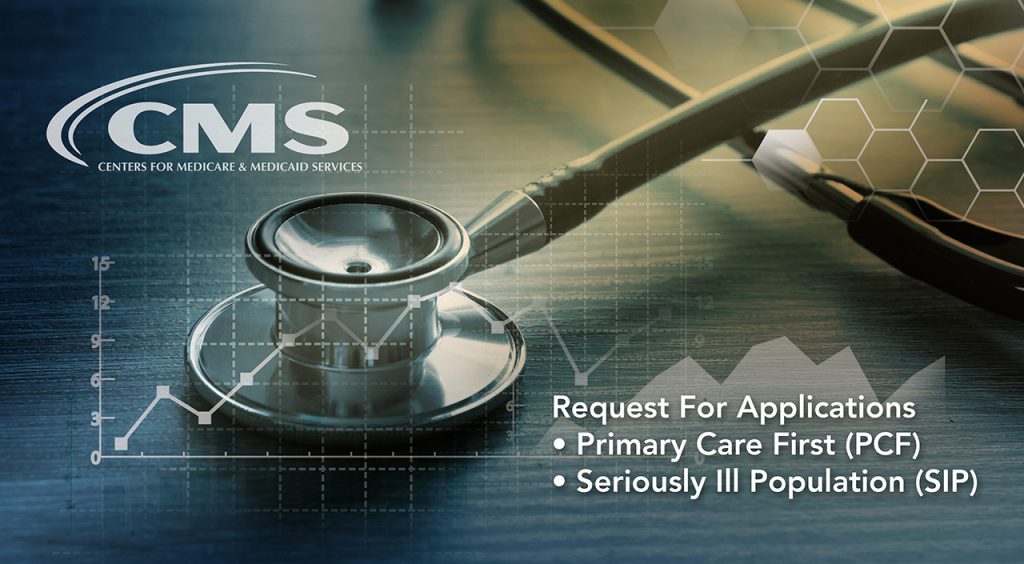CMS Announces Request for Applications for Primary Care First Model Options
(Highlights for Consideration included below)
CMS released the Request for Applications (RFA) for the Primary Care First (PCF) and Seriously Ill Population (SIP) models last Thursday, October 24. The practice application period also started that day while the deadline to apply via the live portal is January 22, 2020.
The model will now begin in January 2021 (a delay of one year from the originally anticipated start date). CMS will select practices and payers during Winter/Spring 2020 and will onboard participating practices and payer partners to the model from July to December 2020.
Following are important highlights of the new program for practices to consider:
Fees and Measurements
- Under PCF General, the primary care flat visit fee will be reduced to $40.82.
- HCC Risk Group 4 will be the highest-level risk group with a payment of $175 Per Beneficiary Per Month (PBPM).
- Practice risk groups 3 and 4 will not use the acute hospitalization performance measure; instead, performance for these groups will be measured on the Advance Care Plan and Total Per Capita Cost (TPCC).
SIP
- SIP practices are expected to have an 8-month management and transition period for stabilization of their patients and then to transition them back to another primary care setting or practice.
- This is known as the average length of attribution (LOA).
- If the 8-month term is exceeded, a $50 PBPM reduction will apply to the monthly SIP payment through a quality adjustment.
- SIP patients will require a face-to-face visit once every 60 days for them to remain attributed to the practice.
- SIP payment redesign now states that after a practice conducts its initial face-to-face visit with the SIP patient, CMS will make a one-time payment of $325. With PCF, beginning the month following the initial visit, the practice will receive a $275 PBPM minus a $50 quality withhold that can be earned back with a potential quality bonus at the end of the first performance year.
- SIP practices must describe the service area(s) in which they are interested in participating using zip codes and must define the maximum number of SIP patients the practice has the capacity and capability to manage.
Participation and Eligibility
- Practices participating in the Independence at Home (IAH) Demonstration are eligible to participate even if it is not offered in the region(s) of the IAH practice.
- Practices participating in the Comprehensive Primary Care Plus (CPC+) model cannot participate in 2021, however, they can participate in 2022.
- Concierge practices, Rural Health Clinics (RHCs) and Federally Qualified Health Centers (FQHCs) are not eligible to participate.
- Eligible practitioners are those practicing in internal medicine, general medicine, geriatric medicine, family medicine and/or hospice and palliative medicine.
Home Centered Care Institute Support
If you have questions about these changes or other home-based primary care questions, you can contact our HCCIntelligence™ Resource Center Hotline at 630-283-9222, 9:00am to 5:00pm (Central Time) Monday through Friday – or email us at [email protected]. The hotline and additional offerings in the Resource Center, including monthly webinars, virtual office hours, and tools and tips sheets are available at no charge due in part to a grant from The John A. Hartford Foundation.



